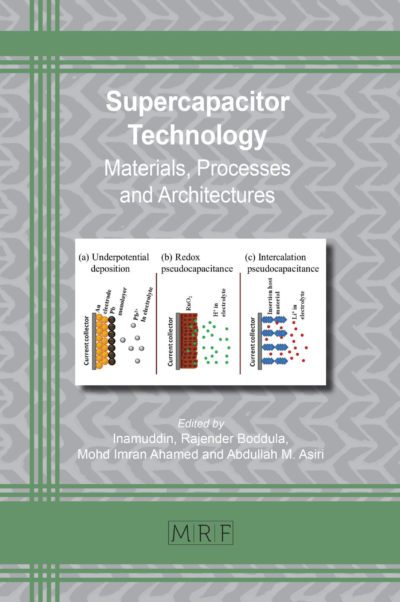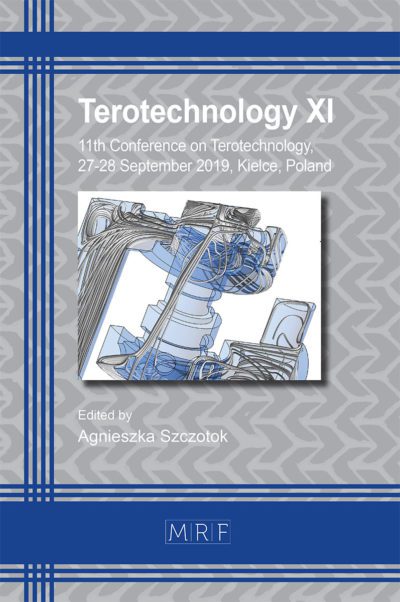Thermo-mechanical properties of polylactic acid/olive wood composite for additive manufacturing
Francisco Comino, José A. Martinez-Sánchez, Pablo E. Romero, Nicola Gurrado, Roberto Spina
Abstract. This study explored developing and characterizing sustainable composite materials based on polylactic acid (PLA) and olive wood particles. The composites were produced with varying wood contents (5–20 wt.%) and analyzed for their microstructural, thermal, and mechanical properties. Scanning Electron Microscopy (SEM) revealed a homogeneous dispersion of wood particles at lower concentrations, while higher wood contents led to agglomeration and interfacial defects. Differential Scanning Calorimetry (DSC) indicated that incorporating wood particles slightly reduced the matrix crystallinity, though the melting temperature remained unaffected. Tensile tests showed that small additions of wood particles (≤10 wt.%) maintained reasonable mechanical properties, slightly increasing Young’s modulus at 10 wt.%. However, higher filler concentrations (>10 wt.%) significantly reduced tensile strength and ductility due to poor interfacial adhesion and particle agglomeration. These findings contribute to developing sustainable materials for applications that balance mechanical performance and eco-friendliness. Further optimization of processing conditions and interfacial compatibility is necessary to maximize performance in industrial applications, particularly in biodegradable and renewable material solutions.
Keywords
Composite, Thermal Properties, Mechanical Properties, Material Extrusion
Published online 5/7/2025, 8 pages
Copyright © 2025 by the author(s)
Published under license by Materials Research Forum LLC., Millersville PA, USA
Citation: Francisco Comino, José A. Martinez-Sánchez, Pablo E. Romero, Nicola Gurrado, Roberto Spina, Thermo-mechanical properties of polylactic acid/olive wood composite for additive manufacturing, Materials Research Proceedings, Vol. 54, pp 2344-2351, 2025
DOI: https://doi.org/10.21741/9781644903599-253
The article was published as article 253 of the book Material Forming
![]() Content from this work may be used under the terms of the Creative Commons Attribution 3.0 license. Any further distribution of this work must maintain attribution to the author(s) and the title of the work, journal citation and DOI.
Content from this work may be used under the terms of the Creative Commons Attribution 3.0 license. Any further distribution of this work must maintain attribution to the author(s) and the title of the work, journal citation and DOI.
References
[1] W. Crupano, B. Adrover-Monserrat, J. Llumà, R. Jerez-Mesa, J.A. Travieso-Rodriguez, Investigating mechanical properties of 3D printed polylactic acid / poly-3-hydroxybutyrate composites. Compressive and fatigue performance, Heliyon 10 (2024). https://doi.org/10.1016/j.heliyon.2024.e38066
[2] D. Krapež Tomec, M. Kariž, Use of Wood in Additive Manufacturing: Review and Future Prospects, Polymers (Basel) 14 (2022). https://doi.org/10.3390/polym14061174
[3] L. Zhang, S. Lv, C. Sun, L. Wan, H. Tan, Y. Zhang, Effect of MAH-g-PLA on the Properties of Wood Fiber/Polylactic Acid Composites, Polymers (Basel) 9 (2017). https://doi.org/10.3390/polym9110591
[4] A. Awal, M. Rana, M. Sain, Thermorheological and mechanical properties of cellulose reinforced PLA bio-composites, Mechanics of Materials 80 (2015) 87–95. https://doi.org/10.1016/j.mechmat.2014.09.009
[5] J.A. Martínez-Sánchez, P.E. Romero, F. Comino, E. Molero, M. Ruiz de Adana, Effect of Material Extrusion Process Parameters to Enhance Water Vapour Adsorption Capacity of PLA/Wood Composite Printed Parts, Polymers (Basel) 16 (2024). https://doi.org/10.3390/polym16202934
[6] N.S. Yatigala, D.S. Bajwa, S.G. Bajwa, Compatibilization improves physico-mechanical properties of biodegradable biobased polymer composites, Compos Part A Appl Sci Manuf 107 (2018) 315–325. https://doi.org/10.1016/j.compositesa.2018.01.011
[7] Z. Liu, Q. Lei, S. Xing, Mechanical characteristics of wood, ceramic, metal and carbon fiber-based PLA composites fabricated by FDM, Journal of Materials Research and Technology 8 (2019) 3743–3753. https://doi.org/10.1016/j.jmrt.2019.06.034
[8] Y. Tao, H. Wang, Z. Li, P. Li, S.Q. Shi, Development and application of wood flour-filled polylactic acid composite filament for 3d printing, Materials 10 (2017). https://doi.org/10.3390/ma10040339
[9] A. Bahar, A.E.A. Hamami, F. Benmahiddine, S. Belhabib, R. Belarbi, S. Guessasma, The Thermal and Mechanical Behaviour of Wood-PLA Composites Processed by Additive Manufacturing for Building Insulation, Polymers (Basel) 15 (2023). https://doi.org/10.3390/polym15143056
[10] M.J. Le Guen, S. Hill, D. Smith, B. Theobald, E. Gaugler, A. Barakat, C. Mayer-Laigle, Influence of Rice Husk and Wood Biomass Properties on the Manufacture of Filaments for Fused Deposition Modeling, Front Chem 7 (2019). https://doi.org/10.3389/fchem.2019.00735
[11] T.C. Yang, C.H. Yeh, Morphology and mechanical properties of 3D printed wood fiber/polylactic acid composite parts using Fused Deposition Modeling (FDM): The effects of printing speed, Polymers (Basel) 12 (2020) 1334. https://doi.org/10.3390/POLYM12061334.
[12] A. Ashori, Wood-plastic composites as promising green-composites for automotive industries!, Bioresour Technol 99 (2008). https://doi.org/10.1016/j.biortech.2007.09.043
[13] D.D.C.V. Sheng, M.N. Bin Yahya, N.B.C. Din, K.Y. Wong, M.R.M. Asyraf, V. Sekar, Potential of wood fiber/polylactic acid composite microperforated panel for sound absorption application in indoor environment, Constr Build Mater 444 (2024). https://doi.org/10.1016/j.conbuildmat.2024.137750
[14] J. Zhou, B. Wang, C. Xu, Y.Z. Xu, H. Tan, X. Zhang, Y. Zhang, Performance of composite materials by wood fiber/polydopamine/silver modified PLA and the antibacterial property, Journal of Materials Research and Technology 18 (2022) 428–438. https://doi.org/10.1016/j.jmrt.2022.02.113
[15] K. Vigneshwaran, N. Venkateshwaran, R. Shanthi, G. Kannan, B. Rajesh Kumar, V. Shanmugam, O. Das, The acoustic properties of FDM printed wood/PLA-based composites, Composites Part C 15 (2024). https://doi.org/10.1016/j.jcomc.2024.100532














